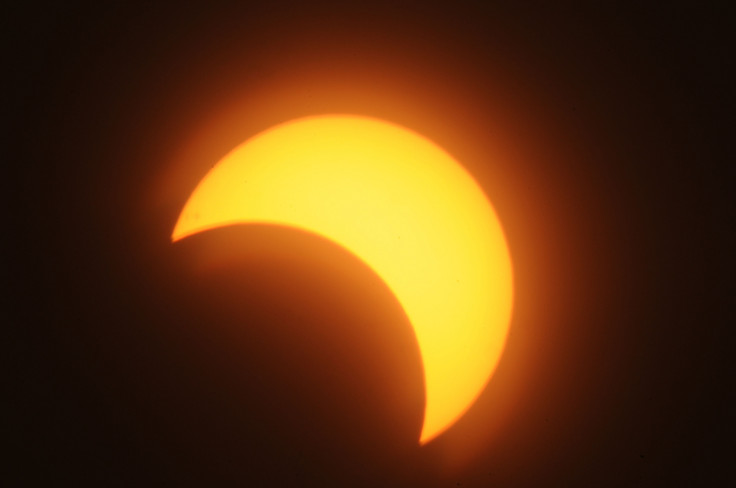Partial Solar Eclipse 2014: Where to Watch Lunar Event Live Online

A partial solar eclipse will be visible over much of the United States and Canada this week, as the moon will hide the sun and cast a narrow shadow on earth.
Taking place on Thursday 23 October, the eclipse will begin just as the sun is setting over the northeastern regions of North America. According to Space.com's Geoff Gaherty, the moon's shadow will begin passing across Earth at approximately 3:38pm EDT. The time of maximum eclipse is 5:45pm EDT and it will end when the moon's shadow departs at 7:52pm EDT.
With the exception of New England and far-eastern Canada, most will be able to see the phenomenon. The Slooh Community Telescope will be providing online coverage for those unable to see the event, which you can watch here.
Bob Berman, an astronomer for Slooh, told AccuWeather.com: "Here you see the moon with the sun behind it, lined up. It takes us away from our mundane things, our problems in the world, whatever it is, to see the grander picture.
"I don't think anyone of any age tires of that, something beyond ourselves, so it's a nice marriage of science and nature and beauty."
Solar eclipses occur when the moon passes directly between the earth and the sun during its orbit. As our natural satellite changes its distance from us, the moon can be too far away to block out the sun completely – so a partial eclipse takes place.
Who can see the event?

Viewers will having varying degrees of visibility, depending on where they are. Skywatchers in central and western areas of the US and Canada will have a better view.
People in northern New England will not see the eclipse because the sun will set just as it begins.
In areas of New York state, only a small portion of the sun will be eclipsed as it sets.
Those in areas from the Midwest and Rockies to California will have a much better chance to view the event as visibility will increase the farther west and north you go.
"At maximum [coverage], only 81% of the sun will be covered," Berman said. "By and large, no matter where you are, it's going to be something when the sun is low in the sky in the West during late afternoon."
Will the weather affect viewing?
Weather conditions may cause a problem for those wanting to view the event in the western US.
"Viewing conditions in the West will not be good across northern California, Washington, Oregon, Idaho and western Montana with clouds and showers moving through that region," Brian Edwards, a meteorologist for AccuWeather.com, said. "There will be good viewing conditions across the Southwest and the Four Corners region."
There will be cloud coverage throughout the Midwest and eastern Texas. Showers are set to take place in Illinois, southern Missouri, Wisconsin, Arkansas and northern Louisiana.
However, better viewing conditions will be seen across the Dakotas, Nebraska and Kansas with mostly clear skies.
How should you protect your eyes when viewing an eclipse?
It is not safe to look directly at the sun during any eclipse.
"We must warn people that even a tiny look at the sun can hurt your eyesight - don't do it," Berman said.
One of the best ways to watch the event is through a pinhole camera, a tool that can be made using household items. The camera projects sunlight through a small hole onto the other side of the box, allowing you to see a view of the sun without risking your eyesight.
To create the camera, you need a shoebox, some white paper and some foil.
A Nasa explanation of the partial eclipse can be seen below:
© Copyright IBTimes 2025. All rights reserved.






















